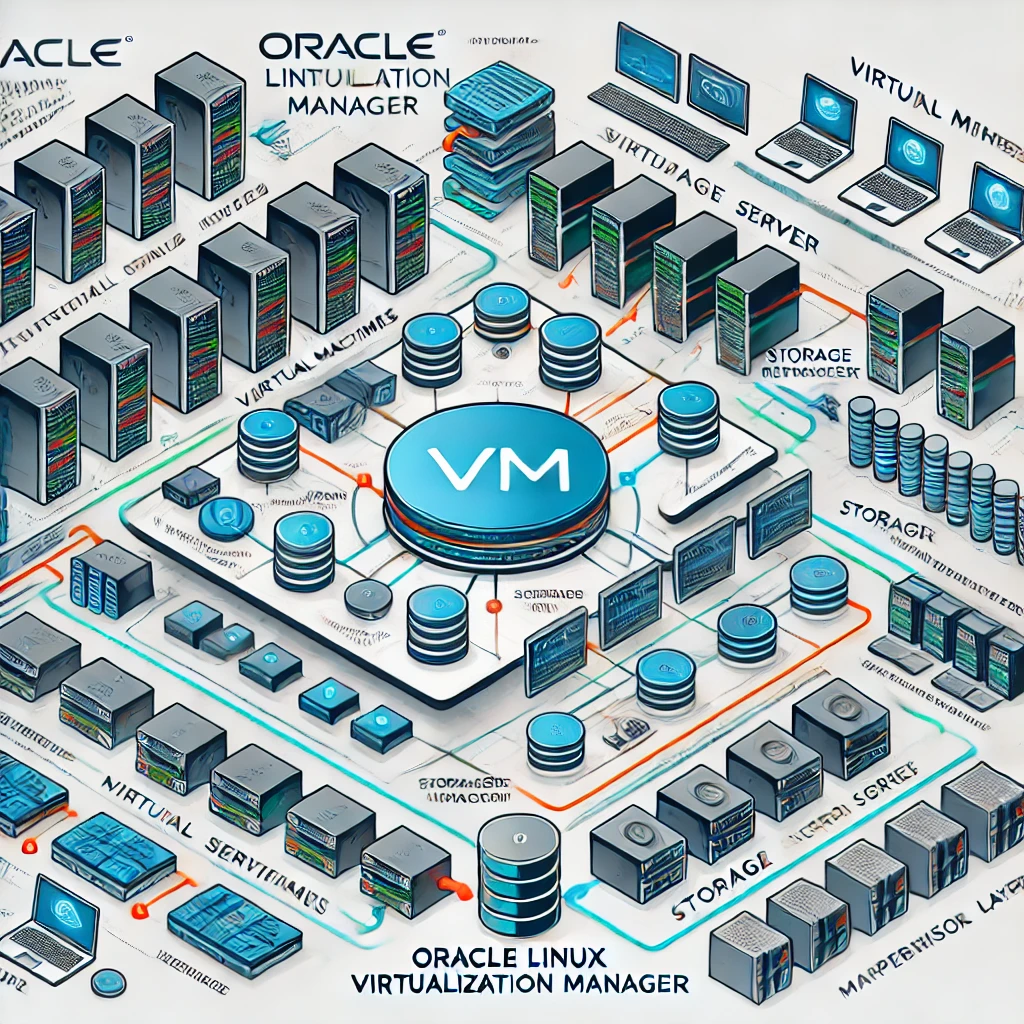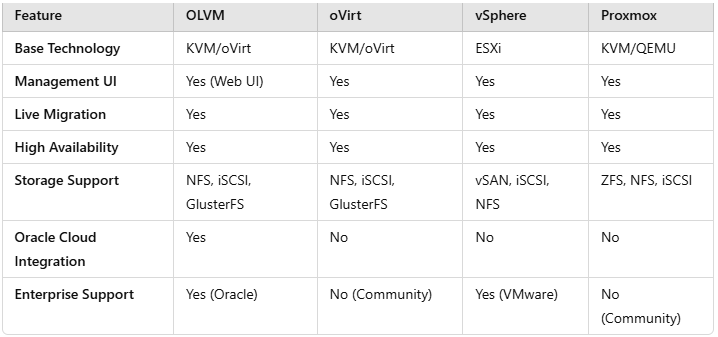
Oracle Linux Virtualization Manager (OLVM) is a powerful, open-source server virtualization management platform that simplifies the deployment, monitoring, and management of Kernel-based Virtual Machines (KVMs) in an Oracle Linux environment. It offers enterprise-grade performance and is fully supported by Oracle
Key Features and Benefits:
- Open Source and Cost-Effective: OLVM is based on the open-source oVirt project, making it a cost-effective solution with no licensing fees.
- Centralized Management: Provides a centralized web-based interface (Administration Portal) for managing the entire virtual environment, including hosts, virtual machines (VMs), storage, and networks.
- Simplified VM Management: Streamlines VM creation, cloning, migration, snapshots, and resource allocation.
- High Availability and Live Migration: Supports live migration of VMs between hosts with minimal downtime, ensuring high availability for critical applications.
- Scalability: Designed to handle large-scale virtualization deployments, allowing you to manage numerous hosts and VMs efficiently.
- Integration with Oracle Linux: Tightly integrated with Oracle Linux, leveraging the stability and security of the underlying operating system.
- Enterprise-Grade Support: Backed by Oracle’s comprehensive support organization, providing access to expertise and resources for troubleshooting and issue resolution.
- Hyperconverged Infrastructure (HCI) Support: Enables the creation of HCI solutions by combining compute and storage resources on the same nodes.
- REST API: Offers a RESTful API for automation and integration with other management tools.
Architecture:
OLVM consists of two main components:
- Administration Portal: A web-based interface for administrators to manage the virtual environment.
- VM Portal: A lightweight web interface for end-users to manage their own VMs.
Use Cases:
- Server Consolidation: Reduce hardware costs by running multiple VMs on a single physical server.
- Development and Testing: Create isolated environments for developing and testing applications.
- Cloud Computing: Build private or hybrid cloud environments.
- Disaster Recovery: Implement disaster recovery solutions by replicating VMs to a secondary site.
OLVM vs. Other Virtualization Platforms

Getting Started with OLVM:
To get started with OLVM, you can follow these steps:
- Download and Install: Download the OLVM installation packages from the Oracle website and install them on your Oracle Linux system.
- Configure Hosts: Add your KVM hosts to the OLVM environment.
- Create Storage Domains: Define storage locations for VM images and data.
- Create Networks: Configure virtual networks for VMs to communicate with each other and the outside world.
- Create VMs: Create and configure VMs based on your requirements.
Resources:
- Oracle Linux Virtualization Manager Documentation: https://docs.oracle.com/en/virtualization/oracle-linux-virtualization-manager/ 1
1. github.com github.com - Oracle Linux Virtualization Manager Training: https://oracle-samples.github.io/oltrain/tracks/olvm/

